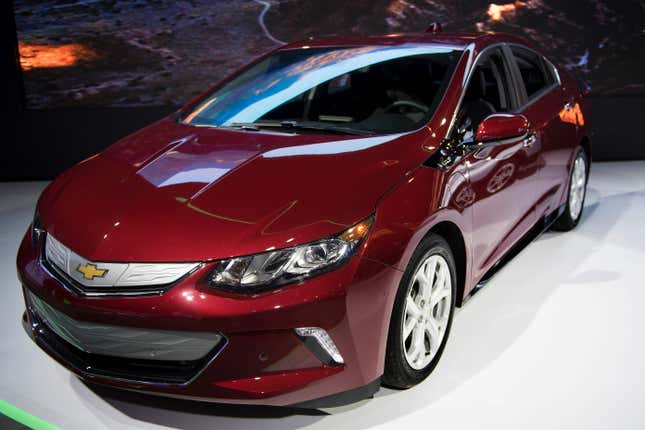When General Motors and Chevrolet unveiled the plug-in-hybrid Volt back in the early days of the Obama administration, then-CEO Rick Wagoner said the car was “a great way to open our second century.” The reveal just happened to coincide with GM’s centennial. Well, nine model years and two generations later, the Volt is dead, and it has been since early 2019. However, its impact on the automotive industry has been felt all over the world.
Nowhere is that more true than in China, according to Bloomberg. There, plug-in hybrids have been the fastest-growing drivetrain segment for the passenger vehicle market over the past five years. It’s grown faster than full-electric vehicles, traditional hybrids and internal combustion vehicles.
It’s such a goddamn shame General Motors pulled the plug on the Volt before it could truly shine. Here’s more on what the world of PHEVs looks like (thanks in large part to Chevy’s little liftback). From Bloomberg:
In the last few years, companies including Li Auto and BYD have been launching more capable, longer-range PHEVs that are pulling in new buyers. Recent analysis from my colleagues Corey Cantor and Siyi Mi at BNEF shows that average PHEV range jumped from 50 kilometers in 2019 to almost 80 kilometers in 2023, and this year will be higher again. Most of that increase is down to sales in China, where average PHEV battery pack sizes are rising quickly.
There’s also a technology twist.
Just under a third of plug-in hybrid sales in China last year were what’s called extended-range electric vehicles, similar to the original Chevy Volt. These had an average range of 127 kilometers last year, and are generally designed using a series powertrain layout, meaning they rely only on the electric motor to drive the wheels. When the battery is depleted, the gasoline engine is switched on to charge the battery or power the electric motor. Standard PHEVs typically have a parallel powertrain architecture, in which both the gasoline engine and electric motor can directly propel the wheels.
Newer PHEV models also are capable of fast charging, which held back some of the early plug-in hybrids. In short, they’re designed for actual consumers, not just for regulatory compliance.
Price tells a lot of the revival story for this drivetrain. Average prices of PHEVs in China have fallen steady in the last five years, taking them from the most expensive option to now being fully cost competitive with gasoline and battery-electric models. In the US, by comparison, they’re now the most expensive drivetrain, costing around $20,000 more than the models available in China, on average.

Of course, plug-in hybrids aren’t perfect, but a lot of that comes down to how their drivers use them. BNEF analyzed how often they were driven in electric-only mode over the past decade. Here’s what researchers found, reported by Bloomberg:
For private car buyers, studies found a range of 26% to 54% of all kilometers driven in PHEVs were done in electric mode. Some of the largest studies, involving millions of cars in China, were toward the higher end of that range. So, not terrible, but certainly not great either.
For company cars, the story is much worse, with the electric drivetrain accounting for just 11% to 24% of total mileage. That’s mostly a European phenomenon, and is likely because many of the drivers of company cars are not paying the fuel costs for their vehicles. As a result, they have little incentive to charge.
All of this is thanks to the Chevy Volt, a car that was so far ahead of its time that people are just now starting to catch up with it. The fact General Motors has done nothing to revive the Volt name and its plug-in-hybrid technology is honestly baffling to me.
I’ve long said that plug-in hybrids are the perfect car for right now. To me, every car being fully electric is still a ways away, so while some argue plug-in hybrids are compromised, I contented that is sort of the point. They’re a great stopgap until our world is ready for an all-electric future. It’s just a shame the Volt was introduced to a world that wasn’t ready for it.

